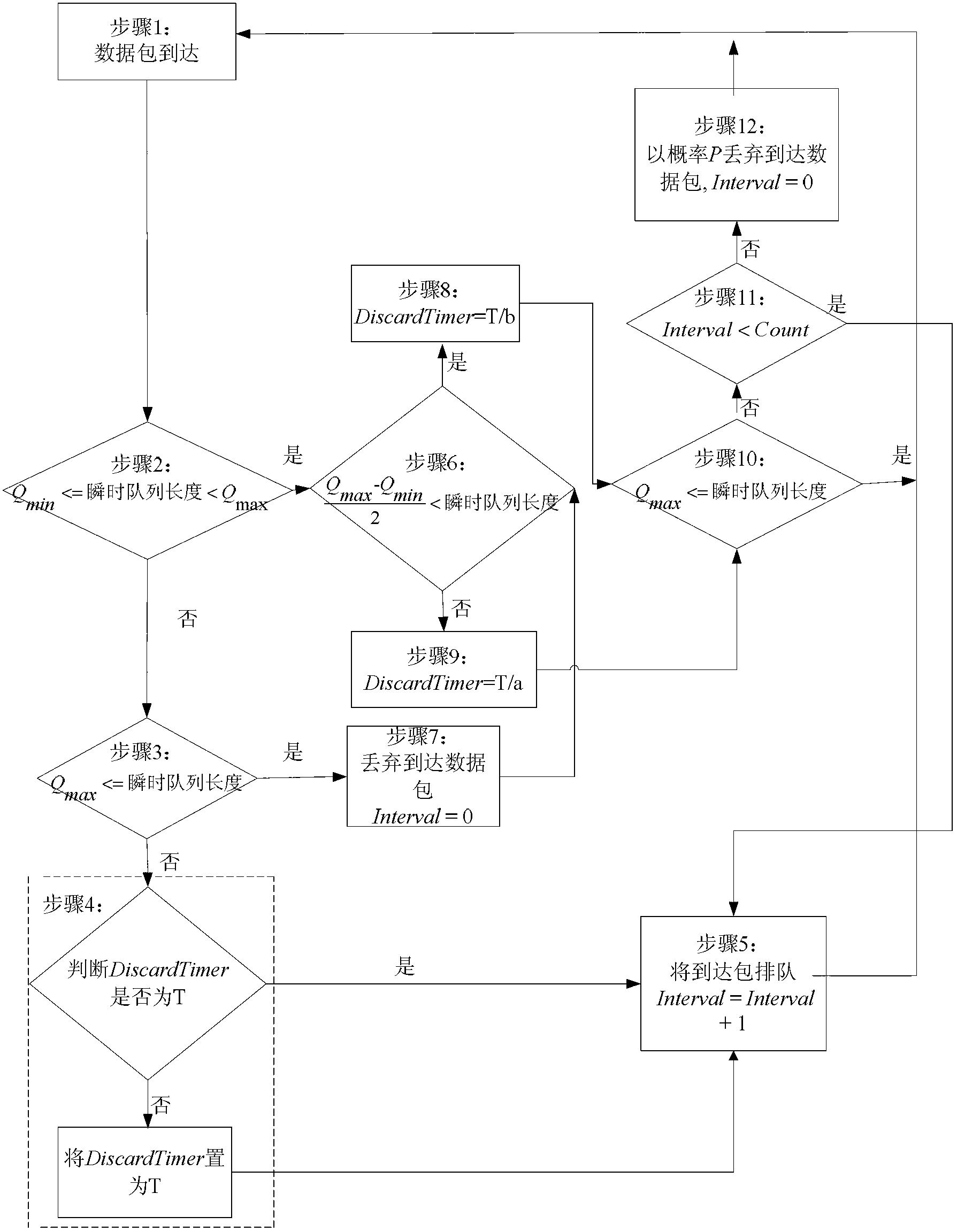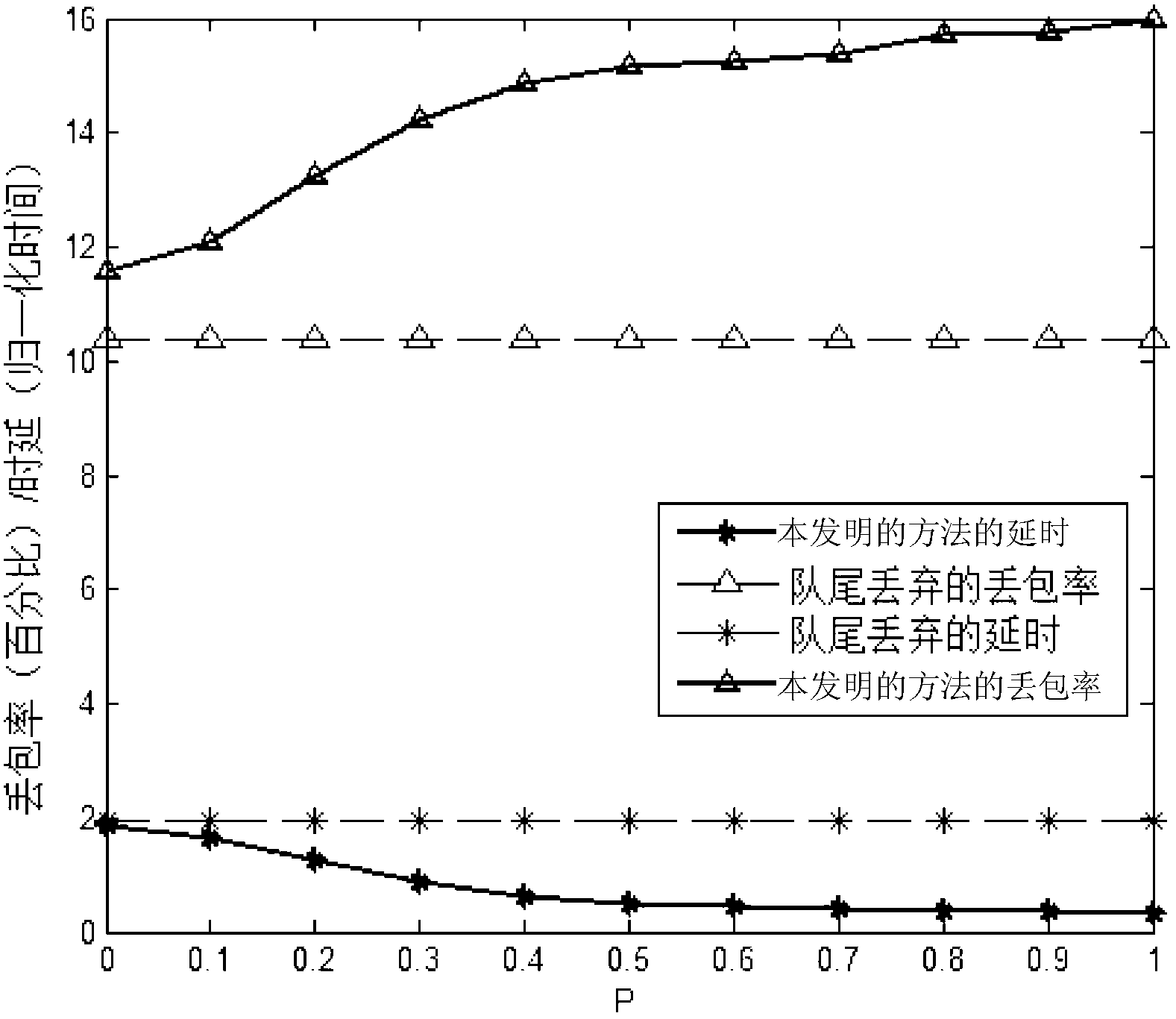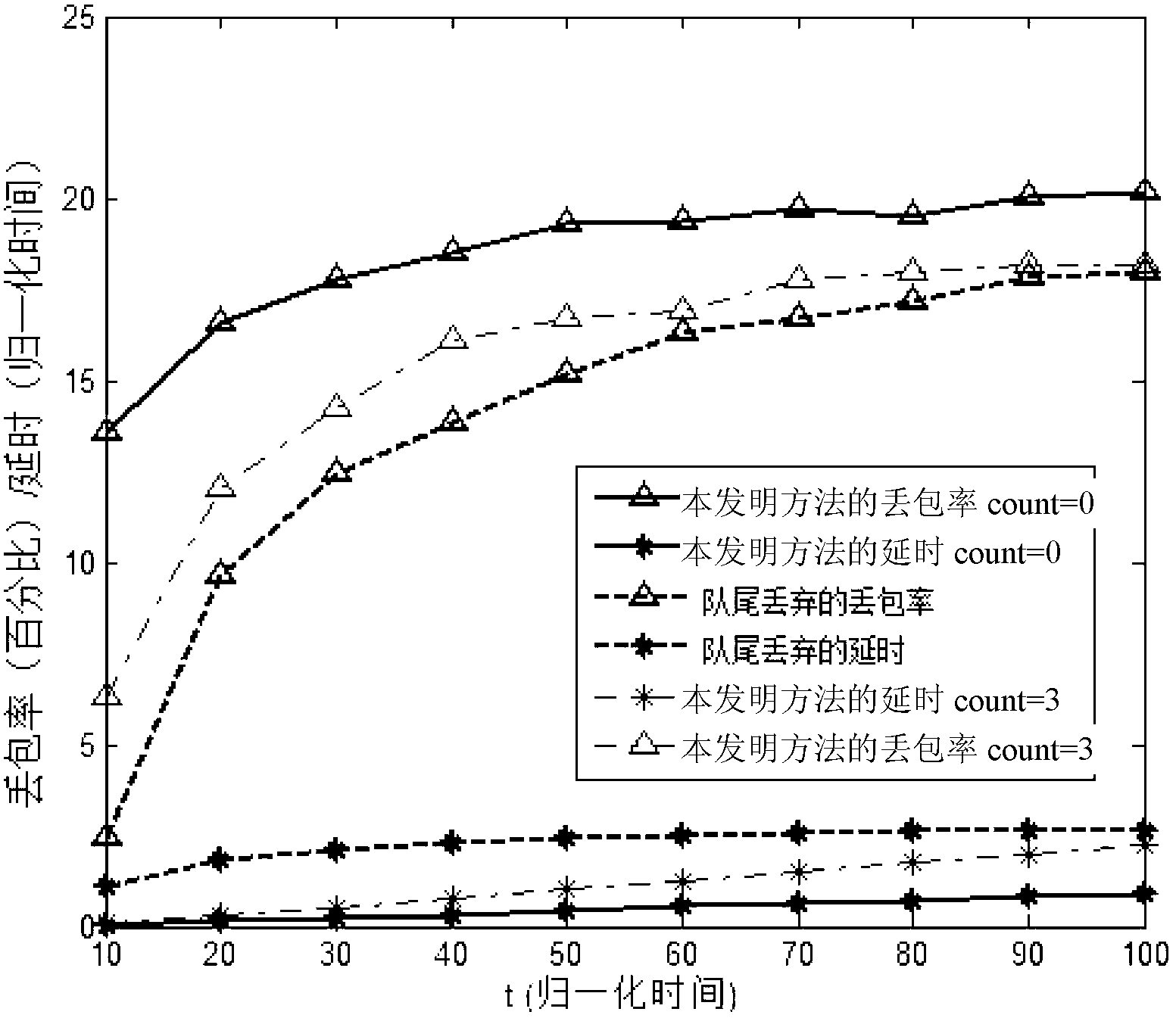Packet loss method in LTE and LTE-A system based on RED algorithm
An LTE-A, packet loss technology, applied in the field of packet loss, can solve the problem of delay-sensitive data flow waiting for a long time
- Summary
- Abstract
- Description
- Claims
- Application Information
AI Technical Summary
Problems solved by technology
Method used
Image
Examples
specific Embodiment approach 1
[0029] Specific implementation mode one: combine figure 1 Describe this embodiment, the packet loss method based on RED algorithm in the LTE described in this embodiment and LTE-A system, it comprises the following steps:
[0030] Step 1: when a data packet arrives at a UM RLC entity, calculate the number of data packets arriving at the buffer queue of the transport entity, where the number of data packets is the instantaneous queue length of the buffer queue;
[0031] Step 2: If the instantaneous queue length described in step 1 is less than the larger threshold Qmax and greater than or equal to the smaller threshold Qmin, go to step 6; otherwise go to step 3;
[0032] Step 3: If the instantaneous queue length is greater than or equal to the larger threshold Qmax, then go to step 7, otherwise go to step 4;
[0033] Step 4: Determine whether the set value of the timer DiscardTimer is T, if it is T, then go to step 5; if not, set it to T, and go to step 5;
[0034] Step 5: pu...
specific Embodiment approach 2
[0050] Embodiment 2: This embodiment is a further description of the packet loss method based on the RED algorithm in the LTE and LTE-A systems described in Embodiment 1. According to the maximum average delay that the system can bear, the maximum delay that the system can bear The packet loss rate and the set throughput of the system set the size of the smaller threshold Qmin.
specific Embodiment approach 3
[0051] Specific embodiment three: This embodiment is a further description of the packet loss method based on the RED algorithm in the LTE and LTE-A systems described in specific embodiment one. The parameter Count is a real number greater than or equal to zero. According to the LTE system and LTE-A System A determines the parameter Count according to the requirements of different data streams on packet loss rate and continuous packet loss rate.
[0052] The Count value is set to a real number greater than or equal to zero. The smaller the Count value is set, the less effective it is for avoiding continuous packet loss; when the Count value is set to zero, its utility is zero. However, for the LTE system and the LTE-A system, the maximum utility of Count is fixed. The larger the Count value is, the greater the packet loss rate of the LTE system and LTE-A system is. The value of Count is determined according to the actual needs of the system. We demonstrate the benefits of the ...
PUM
 Login to View More
Login to View More Abstract
Description
Claims
Application Information
 Login to View More
Login to View More - R&D
- Intellectual Property
- Life Sciences
- Materials
- Tech Scout
- Unparalleled Data Quality
- Higher Quality Content
- 60% Fewer Hallucinations
Browse by: Latest US Patents, China's latest patents, Technical Efficacy Thesaurus, Application Domain, Technology Topic, Popular Technical Reports.
© 2025 PatSnap. All rights reserved.Legal|Privacy policy|Modern Slavery Act Transparency Statement|Sitemap|About US| Contact US: help@patsnap.com



